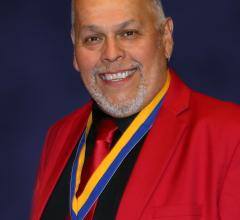
March 11, 2014 — Cianna Medical Inc. is a women’s health company. It announced low recurrence rates – even for younger women – as part of a retrospective analysis of 673 patients with invasive breast cancer treated with the Savi breast brachytherapy applicator. Savi is a strut-based device that delivers breast brachytherapy, a 5-day course of targeted radiation for early-stage breast cancer.
“There is limited recurrence data available for patients with invasive histology treated with APBI, and as a result, many patient selection guidelines use age as a risk differentiator for this type of breast cancer,” said lead author Ben Han, M.D., South Florida Radiation Oncology. “With favorably low recurrence rates and more than two years of follow up in all age groups, our study supports the consideration of invasive-histology patients younger than 60, or even 50, as viable candidates for brachytherapy-based APBI.”
From 2007-2011, 673 patients with invasive histology received strut-based brachytherapy. Researchers stratified patients by age at the time of treatment completion (> 60 yrs, 50-60 yrs and <50 yrs). Local recurrence rates for each group were 1.05 percent, 2.1 percent and 1.85 percent, respectively. Median follow-up was greater than two years for all three groups.
Data came from the Savi Collaborative Research Group (SCRG), which studies the long-term outcomes of women treated with strut-based brachytherapy. They were presented as a poster at the 31st annual Miami Breast Cancer Conference (MBCC), March 6-9. The poster was named “Best Surgical Oncology Poster” by the MBCC.
Similarly favorable recurrence rates with strut-based brachytherapy have been reported with even greater long-term follow-up. Data from the SCRG presented at the American Society for Radiation Oncology (ASTRO) meeting in September 2013 reported “excellent local control” with a 2 percent recurrence rate at 4.5 years median follow-up.
“With more than 20 years of data demonstrating its efficacy and safety, including multiple randomized trials, breast brachytherapy is an accepted treatment for a certain subgroup of women diagnosed with early-stage breast cancer,” said Robert Kuske, M.D., co-principal investigator of the SCRG and a radiation oncologist at Arizona Breast Cancer Specialists, Phoenix, Ariz.
Strut-based brachtherapy is used as part of breast conservation therapy (BCT), which consists of a lumpectomy followed by radiation therapy. Traditionally, the radiation portion consisted of whole breast irradiation (WBI), requiring six to seven weeks of daily treatments. Breast brachytherapy delivers radiation to the area immediately surrounding the lumpectomy cavity, enabling treatment to be completed in as little as five days and sparing healthy tissue from unnecessary radiation. Patient eligibility for breast brachytherapy is based on a number of factors, including tumor size, age, margin status and lymph node involvement.
The strut-based, open architecture design of Savi allows physicians to sculpt radiation based on patient-specific anatomy, which may also increase the number of women eligible for breast brachytherapy.
For more information: www.ciannamedical.com


 November 04, 2025
November 04, 2025 









